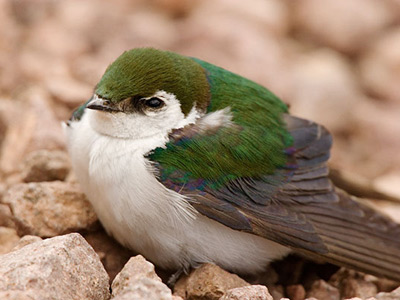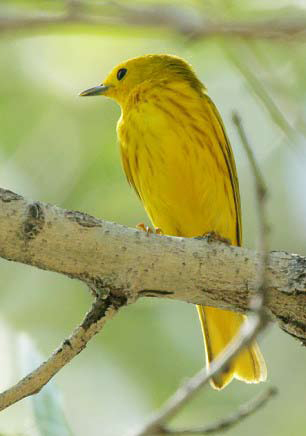Methods

© Robert Shantz
The New Mexico Natural Heritage Program conducted the breeding bird inventory at Pecos National Historical Park (NHP) in May and June 2002. Pecos NHP is 6,800 acres in size and lies in the Upper Pecos River Valley east of Santa Fe, New Mexico. The park’s predominant vegetation is pinyon-juniper woodland. Other habitats include grassland areas, riparian habitat along the Pecos River and Glorieta Creek, a riparian restoration area, and marsh habitats. Linear point counts with distance sampling were used to survey along five transects in three different habitats (grassland, pinyon-juniper, and riparian). Areas targeted for survey outside the point counts included areas around the ranger offices (Trading Post), the Forked Lightning ranch house, an incised canyon in the southeast corner of the monument, and several locations along the length of the Pecos River within the park boundaries. Points were at least 250 m apart and all birds detected by sight and/or sound during a five-minute survey period were recorded.
Status
Eighty-five bird species were documented at Pecos NHP during the 2002 breeding season (87% of those on the target list). Grassland habitats accounted for 27.1% (23 species), pinyon-juniper habitats for 31.8% (27 species), and riparian habitats for 78.8% (67 species) of all species observed (many species used more than one habitat type). Species recorded include: black-chinned hummingbird (Archilochus alexandri) and vesper sparrow (Pooecetes gramineus) in grassland habitat; greater roadrunner (Geococcyx californianus) and rufous-crowned sparrow (Aimophila ruficeps) in pinyon-juniper habitat; and great blue heron (Ardea herodias) and Canada goose (Branta canadensis) in riparian habitat.

© Robert Shantz
During the eight days of point counts, 574 individuals of 62 species were detected. The most frequently detected bird was the violet-green swallow (Tachycineta thalassina) with 10.4% of all detections, followed by the Brewer’s blackbird (Euphagus cyanocephalus; 7.3%), the Western wood-pewee (Contopus sordidulus; 6.6%), and the yellow warbler (Setophaga petechia; 5.2%). The remaining species each averaged less than 1.2% of all detections. When point counts were adjusted for the number of points in each habitat type, grasslands accounted for 18.4%, pinyon-juniper habitats for 17.7%, and riparian habitats for 63.9% of all birds detected.
Twelve additional bird species not documented in the 2002 breeding season are on the target list for Pecos NHP. The most likely cause of non-detections was limited habitat. Of those species not observed, the absence of Lewis’s woodpecker (Melanerpes lewis) is of special note because it was described as a common breeder along the Pecos River in 1989. This absence may be part of a general decline of this bird as documented by national breeding bird survey efforts.
The absence of livestock grazing on Pecos NHP has encouraged the regeneration of woody riparian vegetation along Glorieta Creek and the Pecos River. This regeneration is most noticeable in areas containing willow (Salix spp.) and other shrub species. These shrub habitats provide ideal nesting conditions for species such as yellow-breasted chat (Icteria virens) and song sparrow (Melospiza melodia). Regeneration and maturation of trees such as narrowleaf cottonwood (Populus angustifolia) will continue to provide habitat for canopy species such as yellow warbler and Bullock’s oriole (Icterus bullockii). Additionally, efforts by Pecos NHP to restore historical gravel pits on Glorieta Creek to a matrix of riparian wetlands and woodlands have clearly benefited marsh-favoring species such as red-winged blackbird (Agelaius phoeniceus) and common yellowthroat (Geothlypis trichas). Continued restoration efforts will provide habitat for additional species favoring shrub and tree habitats as vegetation matures. The maintenance of minimum flows and continued exclusion of livestock in both Glorieta Creek and the Pecos River will ensure the persistence of riparian vegetation necessary to many breeding birds.
Contacts
Kristine Johnson, Giancarlo Sadoi, Gabor Racz, Josh Butler, & Yvonne Chauvin, New Mexico Natural Heritage
Reference
Johnson K and Others. 2003. National Park Service Southern Plains Network Inventory Report for New Mexico Parks. Albuquerque, NM.
Prepared the Southern Plains Network Inventory and Monitoring Program, 2015.
Part of a series of articles titled Southern Plains Bird Inventories.
Last updated: February 1, 2017
